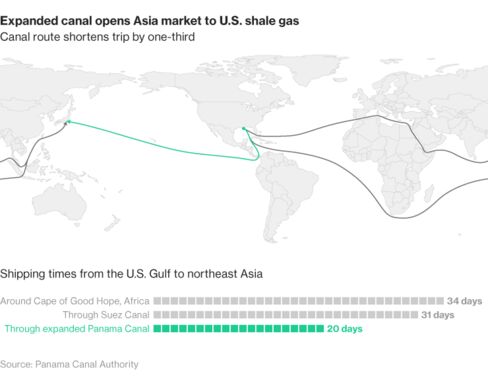
Why Phil Mickelson didn’t get busted.
On Friday, July 27, 2012, Phil Mickelson received a phone call. It wasn’t just any call; it was, according to the U.S. Securities and Exchange Commission, a transmission of business intelligence potentially worth millions of dollars. Mickelson’s friend, a gambler named William Walters, was calling to urge him to buy shares of Dean Foods. The Dallas-based dairy conglomerate was going to announce a spinoff of its organic foods unit the following week, and the company’s board thought it would cause Dean stock to pop. Walters had gotten the tip from the best possible source, a board member who’d participated in the conference call where the board encouraged the Dean chief executive officer to move ahead. It was about as close to a sure thing as you could get, and Walters, who understood odds better than most people, had already accumulated almost 4 million shares, an aggressive bet worth about $50 million.
The golf great was hardly a high-velocity stock trader. Mickelson, who’s made almost $80 million over his playing career, had never before invested in Dean, according to the government. Yet that following Monday and Tuesday, he allegedly purchased 200,240 shares, partly on margin, for $2.4 million. A week later, on Aug. 7, Dean announced the spinoff, and as the board had predicted, the stock shot up 40 percent. Walters made $17.1 million and Mickelson $931,000.
Three people, one a celebrity athlete, with access to internal information about a publicly traded company. Advantages the majority of investors in the market didn’t—and aren’t supposed to—have. Several perfectly timed trades yielding millions in profit. If one were to describe the transaction to a layperson, it’s likely that it would sound like a crime.
Securities investigations travel at an inchworm’s pace, and almost four years later, on May 19, the U.S. attorney for the Southern District of New York, Preet Bharara, stood in front of a room full of reporters to announce securities fraud charges against Walters and his source, former Dean board member Thomas Davis. Davis had cooperated and pleaded guilty; Walters had been arrested the night before. With the snappy language he’s known for—Bharara called Davis a “secret bug in the boardroom”—the U.S. attorney explained that Walters and Davis had used an anonymous prepaid cell phone and a code, “Dallas Cowboys,” to refer to the target company. “These bets were no gamble at all,” Bharara said of their trades, because Walters “had tomorrow’s headlines today.”
“Brazen insider trading continues to be a blot on our securities markets,” Bharara continued, “and the integrity of our markets continues to be a priority of our office.”
So why wasn’t Mickelson charged?
The answer is that certain kinds of behavior previously understood to be insider trading are now effectively legal—or at least not prosecutable. More than 20 years after the imprisonment of Ivan Boesky, the infamous arbitrageur, it’s become vastly harder to convict someone for insider trading—the result of several years of legal challenges that handed Wall Street an enormous victory. An appeals court ruling in December 2014 basically legalized the don’t-ask, don’t-tell information-gathering model employed by many hedge funds; it’s now OK to trade on questionable information that one receives secondhand, as long as you don’t know too much about how it was obtained.
Offering someone a pile of cash in exchange for confidential, market-moving intelligence is still clearly over the line. But to cite an example Bharara himself has used: Say a CEO knows his company is being taken over in a few weeks—he could, potentially, pass that information to a nephew for nothing in return, and the nephew and his friends could, in theory, trade on it. Alternatively, the CEO could share the plans with a bookie in exchange for forgiving a gambling debt. The bookie could then tell his friends to trade, who could then tell their friends to trade. As long as none of those further down the chain knew the tipper’s gambling debt was forgiven, they would be in the clear.
Is it fair for rich, well-connected individuals with access to valuable corporate information to freely make money from it? Or is that deeply unfair? “I don’t know that it gives traders carte blanche to break the law,” Richard Holwell, a federal judge who’s presided over major Wall Street trials, told Bloomberg News. “But it certainly makes it easier to get away with.”
The events that led to this new legal reality began in November 2010, when a group of dark, unmarked cars pulled up to an office building in Stamford, Conn. The SEC, FBI, and prosecutors from the Manhattan U.S. Attorney’s Office were in the midst of a major investigation into insider trading at multiple hedge funds. Raj Rajaratnam, the co-founder of the $7 billion-plus Galleon Group, had been arrested the previous October; government investigators were chasing down Rajaratnam’s connections, and their connections’ connections. One trader on the list was Todd Newman, a portfolio manager at the hedge fund Diamondback Capital. The FBI had come to Diamondback’s Stamford office to try to persuade Newman to cooperate, or else storm in and search the premises. While that was happening, a separate FBI squad was preparing to raid Level Global, a Manhattan hedge fund co-founded by Anthony Chiasson. A third fund, Boston’s Loch Capital, was also targeted. Soon, FBI agents were carting hard drives and cell phones out of major investment firms in broad daylight.
Chiasson and Newman were charged with insider trading in January 2012. But it wasn’t a typical case. Rather, the two were at the outer extremity of a ring of six traders and analysts the government accused of playing a sort of demented game of “broken telephone”—sharing and trading on material nonpublic information. Bharara called it a “criminal club.” In one example, an investor relations employee at Dell shared the computer maker’s internal financial information with a friend at an asset management firm. The friend passed it along to an analyst at Diamondback, who passed it along to his boss—Newman—as well as to a friend at Level Global, who passed it to his boss, Chiasson. Newman and Chiasson traded on the information. In all, they made over $70 million trading tech stocks this way, according to the government. It was unclear what, exactly, they knew about the source of the information, but it certainly looked suspicious.
The courts began to consider: Was this illegal—or simply what traders in the modern market do every day?
Much of the insider trading that occurred during the Boesky era was straightforward and transactional, sometimes involving suitcases of cash delivered by men in suits in hotel lobbies. By the early 2000s, the government saw insider trading as more amorphous, an exchange of favors, rumors, and sometimes hard numbers passed along for goodwill or expectations of career help. Traders cared less about one-off mergers and more about companies’ quarterly earnings. But while this new mechanism for making money was highly profitable and unavailable to average investors, prosecuting it was hard.













